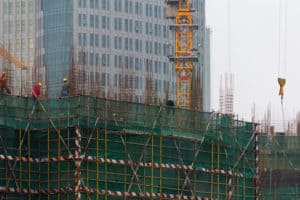The global pandemic has had a huge impact on the entire world. Even essential businesses that were allowed to operate throughout have been hit hard and are just now recovering.
According to BusinessWire, the reasons for this turn (down 2.1% in 2020) in the construction industry specifically is the difficulty around social distancing on smaller sites, decreased labour availability, and a disruption in the manufacture flow of construction materials. However, the industry made a great comeback this year. According to the Australian Construction Industry Forum, it is projected to reach 2.7%. This is great news for the country because construction accounts for around 9% of its gross value added every year, which has been an impressive trend since at least 2011.
Because of the industry’s importance in the economy, construction will play a significant role in the economic recovery of Australia over the next few years. The government has invested quite a bit in this industry, with its Home Builder grants and $15.2 billion investment in infrastructure.
They’re definitely doing their part to make sure Aussies come out of this unprecedented situation better and stronger. For its part, what can the construction industry do to guarantee a smooth recovery? The best strategy moving forward is two-pronged: focusing on external and internal aspects of the business.

Public Perception
The construction industry, despite its best efforts, still has the image of an old-fashioned, rugged job. Unfortunately, in every industry, perception is just about everything. There are ways to fix it, though.
Education
Most people are taught that you go to primary through senior secondary school, go to university, get a decent-paying job, get married, have kids, get a dog or two, etc. Little to no focus is ever put on deviating from these norms, and it’s a real shame. Not only is construction open and innovative, but it can offer great job security as well.
One important way to engage the community around you is to visit schools. How else will school-aged kids know construction can be a lucrative and rewarding career opportunity? Engagement, especially when the audience is young, is the single best way to combat negative and outdated stereotypes of the construction industry.
Public Relations
Unless you have direct experience either in or with an industry, you can’t even begin to imagine what it’s like. The general public can’t exactly be faulted for their misconceptions because of the last point, but it’s also harder to combat ignorance in adults.
To pique curiosity into what the industry is doing as a whole and, specifically, in a community, a construction company can use hoarding signage to advertise their projects. This has the added bonus of securing a job site, therefore protecting community members from any health and safety hazards. It can even draw more attention to a site because of the inherent mystery. Heck, it might even draw in potential future employees!
Image
An important reason to focus on the community you serve, besides the very obvious one, is the optics of it all. A big part of running a business or company, especially in a field like construction, is collaboration. Working so seamlessly as a team with, say, a local restaurant that does catering, and striving toward a common goal should impress anyone, yeah?
For example, if a foreign investor is interested in contributing to an infrastructure project, and they see that the community around the company embraces the work being done, they might be more likely to invest in that company. It’s a smart decision. In the grand scheme, it’s best to nurture both globalisation and localisation to ensure longevity for your business.
Labor
The lifeblood of any business is truly its employees. To keep an operation running without any hiccups, it’s best if its labour force feels appreciated, taken care of, and valued. Meeting these needs establishes trust and loyalty, and in turn, increased productivity. This focus also attracts diverse workers into the industry to keep it robust.
Communication
Construction would probably be at the top of the most lists of industries that require clear and consistent communication, but not just for workplace safety.
Communication between a project manager and workers flows both ways, and each end serves an important purpose. A manager cannot always keep their eyes on all things at once, so being open to input from their labourers can keep a project running smoothly. On the other end, receiving feedback on a job can serve the dual purpose of giving an employee room to grow, and it inspires a sense of feeling valued.
Flexibility
Even before the pandemic, maintaining more of a work-life balance has been at the forefront for most industries. But how could that possibly translate into a job like construction?
Actually, maintaining a more flexible schedule for workers was plenty successful during this health crisis. As with other industries, moving toward an output-based model ensured success. Teams that needed to work together to complete a job were given the room to do so, but time spent on a job was tailored to an employee’s needs and availability.
In a quite conservative industry that typically prides itself on how many hours are spent on a construction site, this shift can be a hard sell. Ultimately, though, more flexibility attracts a larger pool of potential employees to draw from, and it will allow construction to continue to be a vibrant trade for generations to come.
Repeat Business
When a project is carried out, the better the communication and collaboration between a labour force and its bosses, which results in a much better overall outcome. The better the outcome, the happier the client! Obviously, pleasing your customers is a top goal for most businesses, especially since it can also lead those clients to come back for more.
A 2020 industry report indicated that a majority of employees in construction worked with repeat clients, and that statistic overlaps with job satisfaction. This makes sense because the more repeat business a company gets, the more secure a job with the said company will feel, and not just personally. An overwhelming driving factor behind job satisfaction is consistently good relationships between colleagues.
Focusing on both external and internal aspects of a business will only help the bottom line in the long haul. In this case, embracing these ideas will help Australia’s economy recover and thrive!

Recent Comments